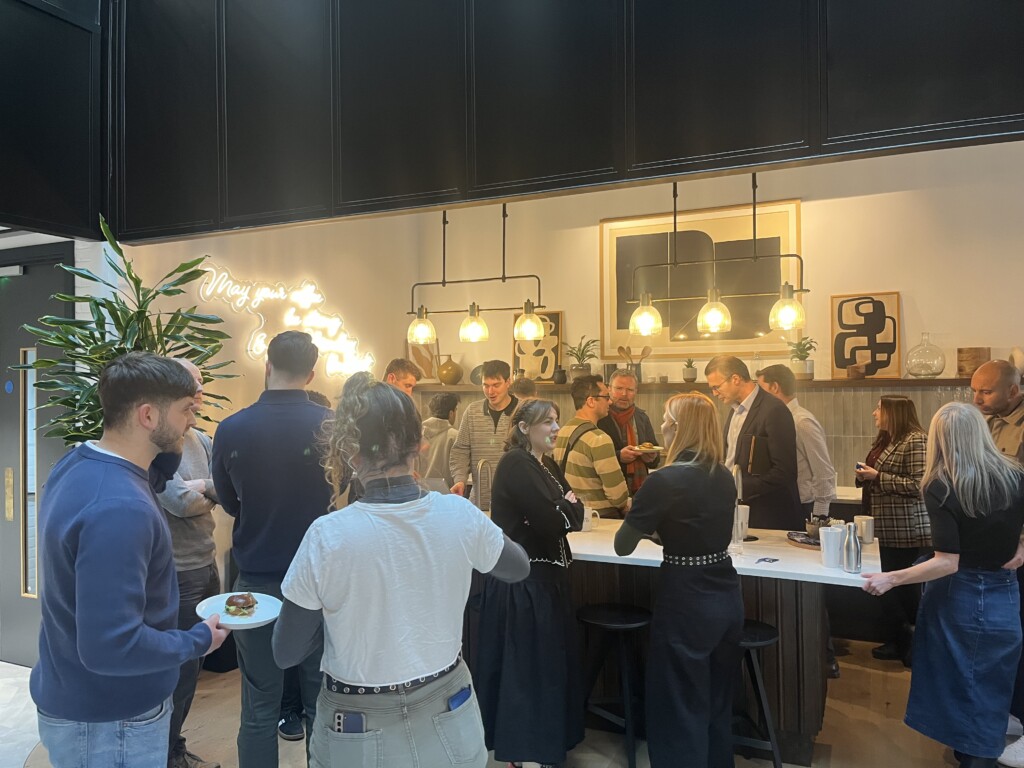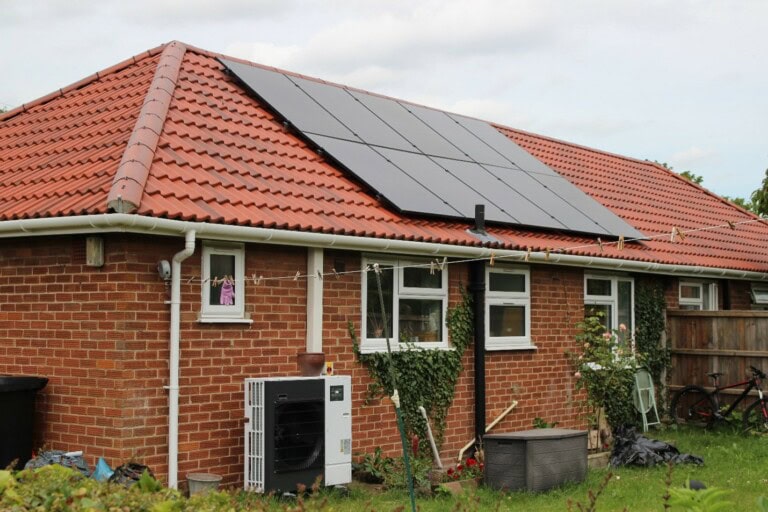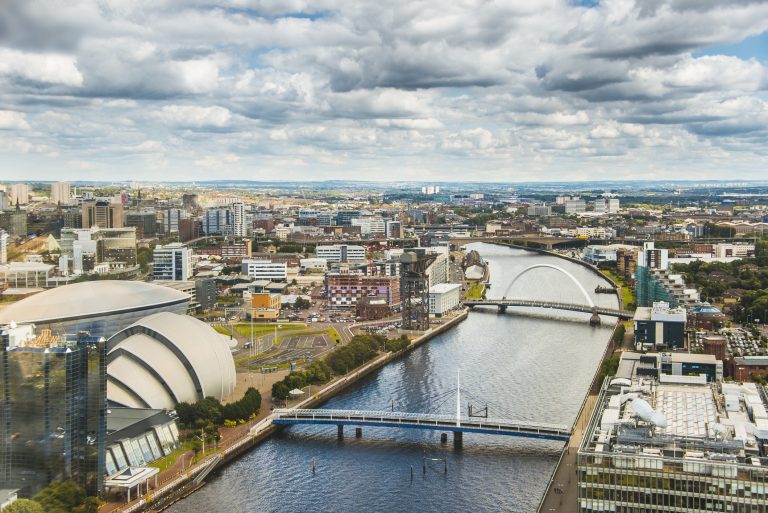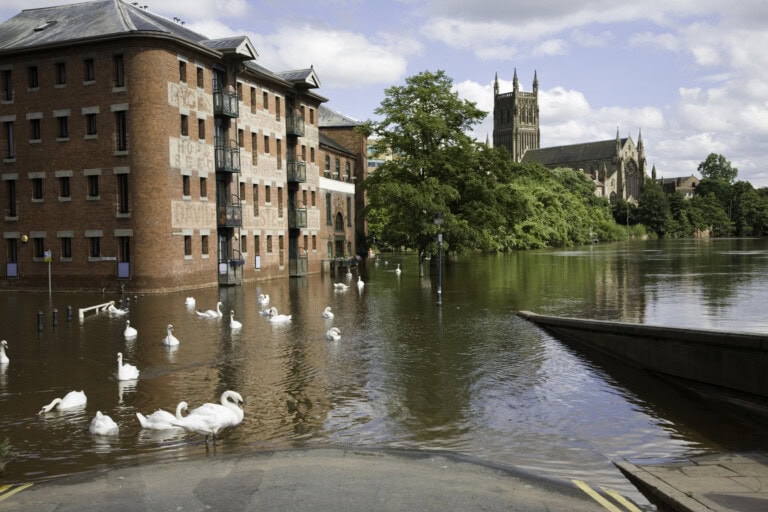UKGBC Members visit Coal House in Cardiff

Can we transform the ‘experience’ of a building without modifying its structure?
The answer was clear when we stepped in to the West entrance of Coal House: yes, and we can make a lot of great improvements to its operational energy performance too.
In February, UKGBC members visited Coal House, a commercial deep retrofit project in Cardiff, to see practical solutions to commercial retrofit challenges and hear about the process first-hand from the team involved. We heard from Toni Riddiford, Associate Director at Stride Treglown, about the project’s retrofit journey, and from Tom Eddolls, Surveyor at Knight Frank, about the context of sustainability in the Cardiff rental market. They gave us a detailed insight into the project decisions and challenges.
It was difficult to comprehend that we were sitting in the same space as the pre-retrofit photos we were shown by Toni, as the space was completely different. Its smart look was a world away from the dated building we were shown on the screen which was at risk of becoming a stranded asset in 2020, synonymous with its previous tenant, rated EPC D, and renting for £16.75/sq ft.

The Building
Coal House was featured in the UKGBC Case Study Library and Building the Case for Net Zero: Retrofitting Office Buildings report in 2024 on account of its resource use and operational energy performance. The case study showcases the maintenance of the existing structure to minimise embodied carbon impact. Instead of a full rebuild, the building underwent an exterior refurbishment with solar PV and solar shading installed. It also highlights its building management system (BMS), which integrates a smart building server, sensors, access and visitor management systems, as well as the automated air quality management and lighting upgrades.

‘Do Less’ Principles in Practice
Looking out of the windows from the first-floor office space, members were curious to ask about the decision to rule out fabric upgrades during the retrofit. Window replacements and additional insulation came out as marginal in an analysis of carbon savings, which is comparable to the findings of UKGBC’s report for EPC impact on a building of this age. The decision not to undertake these measures minimises the embodied carbon impact of the project, which should be considered alongside operational energy improvements.
However, it was clear during the retrofit that MEP upgrades alone would not be sufficient to reposition the building as an attractive place to work. The team refer to this concept as ‘the intangibles of retrofit’, the things that you can’t measure in terms of carbon or energy savings, but which create a building that’s attractive to users and therefore commercially viable to retrofit, operate and own. At the end of the day, a building is a wasted material asset if it isn’t occupied, and could be deemed a failure if it doesn’t provide a healthy and inspiring place to work.
The architect and creative team therefore worked together to develop a bold rebrand for the building, which ran through from marketing to external appearance and internal look & feel. To limit expense, this involved painting the existing brickwork and focussing intervention over the entrance areas, with feature screens and canopies. Internally, the NIA was reduced to facilitate the expansion of the reception area, inclusion of a coffee bar, lounge seating, work booths, Zoom rooms and a bookable meeting space.

What did attendees say?
The simple combination of ‘seeing the real thing’ while hearing a candid re-telling from the project team and discussing with industry peers proved valuable in a city with a tricky local market – prospective Cardiff occupiers often prioritise location as their preeminent consideration and are not yet asking the sophisticated environmental questions that you might expect.
“It’s great that we get this investment in Cardiff, in Wales, and we’ve just been told today that this is one of the only net-zero ready buildings in Cardiff, so it’s been great to have a site visit and a walk around as well as a presentation at the start”.
We were also pleased to bring together a range of members and sub-sectors at this event to discuss retrofit challenges from different perspectives. For Simon Matthews, Advisor for UKGBC’s Advancing Net Zero programme, the best part of the day was “talking to some of our younger members and seeing their excitement at visiting. learning and convening in the real world, seeing what change they can bring about and what sustainability can really mean in practice.” For one of our Welsh members, it was meeting the other attendees to discuss experiences and challenges: “The whole day was great. I’m not the most comfortable with networking events, but everyone was so friendly and so welcoming that I left feeling like I’d known them for ages”.
What’s next?
Our next site visit, to ‘Paradise11’, will showcase a commercial new build with industry-leading embodied carbon and resource use practices. The event will take place on Tuesday, 27th May, and UKGBC members can secure their spot for free. Join us for the next opportunity to see real projects, real solutions, and real stories – and connect with members who want to see the same.
Coal House Project Partners
Client: Create Real Estate
Project manager: Mapp
Architect: Stride Treglown
M&E consultant: SVMA
Main contractor: Oktra
Sustainability consultant: Low Carbon Alliance
Related
Impactful offsetting: Using carbon credits to fund social housing retrofit

UKGBC urges action on Scotland’s building decarbonisation amid political delays

How do you create a Flood Resilient City?

UKGBC responds to the government’s Spring Budget 2025

